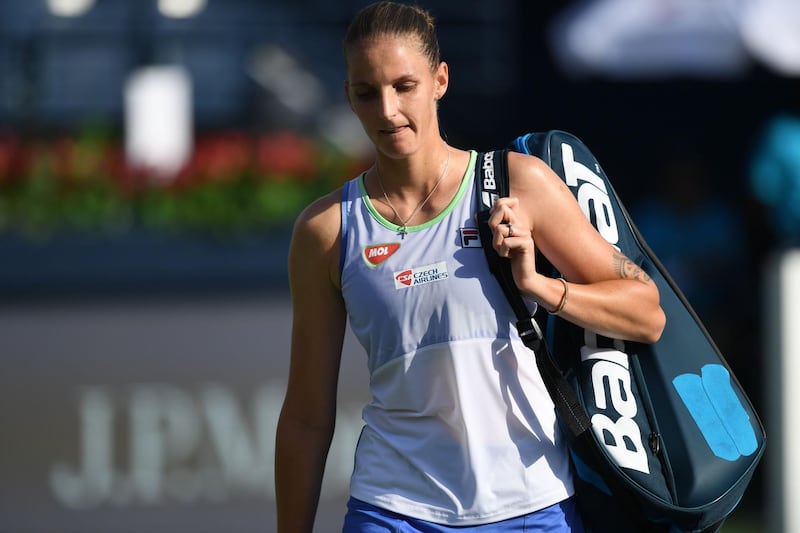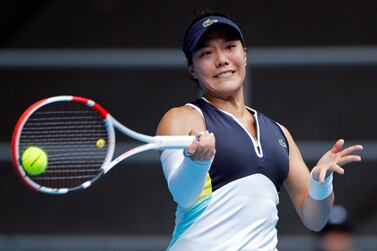At the start of this tennis season in Brisbane in January, Karolina Pliskova joked about how frequently she’s made changes to her coaching staff over the years.
“Of course I change coaches a lot so I think everybody's kind of scared right now,” laughed the Czech world No 3, who parted ways with Conchita Martinez at the end of last year and hired Olga Savchuk and Dani Vallverdu for 2020.
“But it's not that I don't like the people anymore; I just want to improve and do different stuff and I don't want to stay in one place. That's why I change.”
Pliskova is not the only woman on tour with a habit of switching coaches so often. The trend has become so common on the WTA circuit that the tour’s communications team started adding a page to the daily match notes handed out to the media at tournaments that includes a visual diagram of all the coaching swaps that have recently taken place. How else could we possibly keep track?
Common trend
Naomi Osaka had four different coaches in 2019 – Sascha Bajin, Jermaine Jenkins, her father Leonard Francois, and her end-of-season hire-up Wim Fissette.
Bajin joined Kristina Mladenovic’s team for a while then jumped ship to become part of Dayana Yastremska’s crew. Since 2016, Fissette’s CV has included stints with Petra Kvitova, Sara Errani, Johanna Konta, and Victoria Azarenka, before his move to Team Osaka.
After splitting with Pliskova, Martinez linked up with Spanish two-time Grand Slam champion Garbine Muguruza, who had fired Sam Sumyk, who in turn became Anastasia Pavlyuchenkova’s coach. That partnership did not last though as the Russian announced a few weeks ago that she was no longer working with Sumyk.
It looks like the famous WTA coaching carousel continues to spin, even during the current coronavirus-enforced suspension of the tour.
What’s more curious is the fact that the coaching changes appear to be way more prevalent on the women’s tour compared to the men’s, and it’s not easy to determine why that is the case, or why they keep happening so often in the first place.
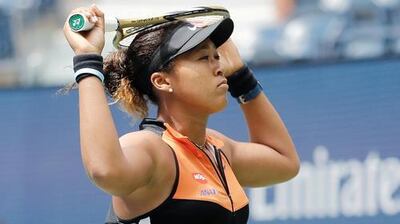
One theory is that the ‘cancel culture’ that has become such a strong presence in current times – particularly on social media – has manifested into players making rash decisions as soon as any conflict arises with their coach. I did not reach my goal with you within the first two months, you’re cancelled!
“It’s a bit the mentality of these days, this throw-away mentality. People when they don’t like something it’s gone, when they don’t 100 per cent agree on something they change,” Fissette said at the Madrid tournament last year when he was still coaching Azarenka.
The vetting process
Former world No 1 Lindsay Davenport, who used to coach Madison Keys and remains a close confidante to the American big-hitter, is amazed at how rapidly those coaching shake-ups keep happening.
"It's crazy. When I played, I had one coach for 12 years, and I had another coach from 2003 until I quit. So I could not have done that," Davenport told The National at last year's Roland Garros.
Davenport and Fissette both agree that players and agents do not take the necessary time before determining that a certain coach would be a good fit for the team.
Agents also tend to keep pitching the same few names to their players as potential coaches. Davenport insists the pool of candidates should be much wider than that.
“People are so quick to hire, that I don’t think they take their time vetting it out properly. I think a lot of trials unfortunately are at tournaments, which makes no sense to me,” she said.
“Not a lot of loyalty as well it seems. Quick to change. And I don’t necessarily think you should stick with something that’s not working well, but there definitely has to be some acceptance from the player of their role in it all.”
The way the tennis season works, there are tournaments for 10 months a year, and many players contest more than 20 events within that time frame.
If you need to find a new coach, the decision often needs to be made fast, and more than often, a player chooses someone based on the success that coach has had with someone else, without factoring in all the variables that come into play.
“You hire a coach which you see doing well with somebody then he’s with you and you think, ‘Are you for real? What are you saying?’ You expect more. It’s a problem of all humans. We make our expectation, draw a person, and then you realise it’s your imagination,” explains Russian two-time major champion Svetlana Kuznetsova. “And then I think the other thing is that these players cannot accept it’s their mistake, they want to put it on somebody else.”
Indeed, many players decide to end a coaching partnership because they blame their mentor for their own shortcomings.
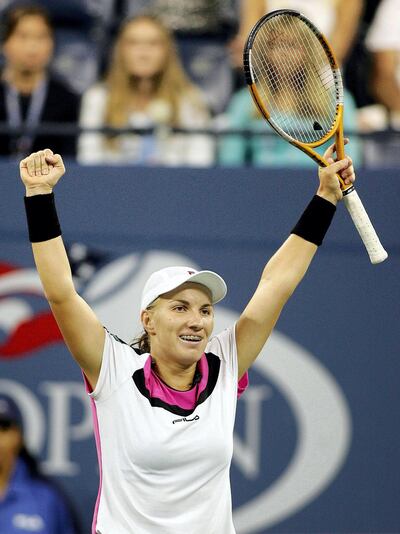
Dmitry Tursunov, a former ATP player who is the coach of Belarusian world No 11 Aryna Sabalenka, feels the problem sometimes lies in the fact that people are looking for a quick fix, or are searching for a ‘yes man’ rather than someone who can tell it like it is.
“It’s similar to how a lot of people are doing diets or fitness routines. It’s kind of like, ‘Well I’m going to try this for one week, okay it’s not working, I haven’t dropped the weight I wanted to drop, so I’m going to jump on something else’,” says Tursunov.
“So you keep jumping from one thing to another but you’re never really buying into the process of changing something.
“Jumping from coaches, if you’re doing it too often, it’s probably a sign of you not wanting to hear the truth and you keep trying to find the person to tell you what you want to hear but then you’re really never going to change.”
The right fit
It must be said that finding the right coach can be extremely difficult. In this ‘entourage era’ of tennis, where players hire large teams and spend all their time on tour with their coaches, from breakfast through dinner, you are trying to find someone who can help you with your game but also a person you can be with for extended hours each day, on flights, at airports, hotels, as well as on the tennis court.
Olympic champion Monica Puig describes the process of selecting the right coach as, “it’s like you’re a puzzle piece and you can’t try and jam the puzzle piece in the wrong place, because it’s not going to fit”.
Some players manage to limit the time they spend with their coach and try to keep things as transactional as possible. Fissette says his coaching relationship with Azarenka was “a business arrangement”. Azarenka is a mother and has a lot on her plate, so when she’s done with practice, she’s not on-site hanging out with her coach, she is busy with her son Leo, and living her own life.
“You should hire a coach to be the coach, if you want somebody for your entertainment, you should bring a friend to the tournament,” added Fissette.
All about chemistry
For others, it can be more complicated than that.
Kuznetsova and her coach Carlos Martinez have a very tight bond, he could be her brother. When they stopped working together for a while, Kuznetsova admitted it was very hard and didn’t want to be this close to whomever she hired next. They have since reunited but Kuznetsova is sharing Martinez with Daria Kasatkina, and doesn’t spend too much time with him at events.
“We spoke about it, about chemistry, I never knew that one can exist like that,” said Kuznetsova. “One exists between lovers, between friends, could be, and this one between player and coach. Maybe no other player will have the same chemistry with him like me. I see similar chemistry with Simona [Halep] and Darren [Cahill]; not many players, maybe [Justine] Henin with Carlos [Rodriguez].”
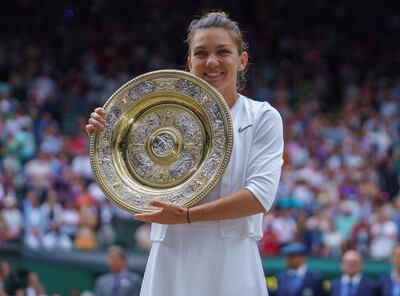
The women’s tour is as competitive as it’s ever been. The depth in field means anyone can beat anyone, and the level keeps getting higher and higher.
There are frequent changes at the top and new Grand Slam winners emerging on the regular. That could be one of the main reasons why players choose to tinker with their teams so often. They can see there is so much opportunity out there and are eager to take it. They are reacting just as fast as their surroundings.
Sandra Zaniewska, a 28-year-old player-turned-coach who worked with Petra Martic last year and is now with Alize Cornet, has an interesting coaching philosophy.
"I think in general we see players sometimes almost as machines. Like this is a tennis player and they are supposed to do a job. This human factor is gone. That's what I missed when I was a player," Zaniewska told WTA Insider recently.
“I feel like tennis players, especially women, they already put enough pressure on themselves. They really do. Of course, sometimes they need a push. But more often than the push they need the slowdown.”
Perhaps now, with the tour suspended for at least four months, everyone can collectively take a deep breath and slow down.
